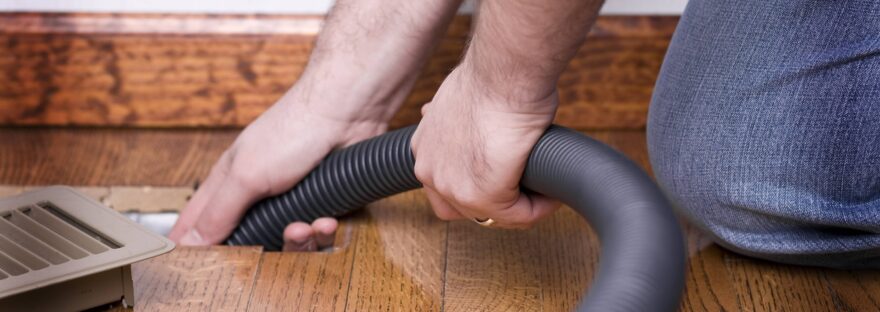If you have a plumbing emergency, it is best to contact Emergency Plumber Tampa near you as soon as possible. However, before you do so, it is important to understand what constitutes a plumbing emergency and how to find the right pro for your needs.

You can do your research ahead of time by using a connection platform that provides reviews and recommendations, licensing and insurance verification, and 24/7 availability all in one place.
When it comes to plumbing emergencies, time is of the essence. The longer you wait for a plumber, the more damage your home can sustain. This is why many homeowners choose to hire emergency plumbers, who can arrive at your home in an emergency situation and resolve it promptly.
Emergency plumbers are available on nights, weekends, and holidays and can respond to your call immediately. They have the tools, equipment, and expertise to handle all types of plumbing issues. They will assess the situation and determine what repairs are necessary to get your home back to normal as quickly as possible.
The first step in a plumbing emergency is to shut off the water supply. This can be done by turning off the individual fixture valves if you know where they are, or by turning off the main water valve at your house’s water meter. Once the water has been turned off, your plumber can begin to locate the source of the problem and address it accordingly.
A plumbing emergency can include any situation that requires immediate attention to reduce the risk of damage or to protect a homeowner’s safety. Examples of these situations include a burst pipe, no water in the home, and sewage backups. However, a clogged shower drain or toilet is not considered a plumbing emergency, and can often be fixed on your own at a more convenient time.
A quality emergency plumber will be licensed and insured, which means they will adhere to the rules and regulations established by your state. They will also use high-quality materials that will ensure a long-lasting repair and provide you with peace of mind. A good plumber will be honest with you about the cost of the service and will never try to overcharge you. They will explain all of your options and work with you to find the most suitable solution for your plumbing needs and budget. They will also be happy to answer any questions you have about your plumbing system.
Peace of Mind
Plumbing emergencies have a way of popping up at the most inconvenient times. From late night calls when the toilet starts overflowing to flooded basements on Christmas Eve, these problems can be extremely stressful and leave you feeling helpless. But having a 24/7 emergency plumber available can give you peace of mind knowing that they’re there to help in your time of need.
Emergency plumbing services provide you with expert and cost-effective solutions to all types of urgent plumbing issues. These experts have the skills and knowledge needed to address issues such as burst pipes, clogged drains, water leaks, and broken water heaters. In addition, they can also offer advice on preventative maintenance that can help you avoid costly repairs in the future.
Professional emergency plumbers are highly trained and have the experience to identify the source of the problem quickly and accurately. This saves you time, money, and the hassle of trying to fix the issue yourself. Plus, they’ll ensure that the repair is completed correctly the first time around, preventing you from having to call them back in the future for recurring problems or further damage.
Attempting to fix a plumbing emergency on your own can often lead to expensive mistakes, such as overflowing toilets and flooded basements. These errors can cause extensive damage to your home and even require major restoration work. But with a 24/7 emergency plumber on standby, you can rest assured that your problems will be fixed as soon as possible.
When choosing a plumbing service provider, make sure they’re licensed and insured. This will protect you from scammers and ensure that the work is done to industry standards. Also, look for a company that offers competitive prices and guarantees their work. This will provide you with peace of mind that you’ll get the best value for your money. An after-hours call centre that handles customer enquiries and dispatches emergency plumbing technicians is another important feature to look for. This will ensure that customers’ calls are answered promptly and their inquiries are handled professionally. This will increase customer satisfaction and build trust in your brand.
Save Money
When a pipe bursts, it can cause a lot of water damage. This is why it’s important to call an emergency plumber as soon as you notice a problem. A plumbing professional can help save you money by assessing the situation and taking steps to minimize damage. They can also advise you on ways to prevent future problems, such as checking for leaks in your pipes and installing new faucets.
If you’re looking for an emergency plumber, be sure to ask friends and family members for recommendations. You can also check online reviews and testimonials. Using this information, you can find a reputable plumber that offers fair prices and quality work.
Another way to save money is to call an emergency plumber only for serious issues that cannot wait until regular business hours. For minor issues, such as a clogged toilet or drain, it’s best to try fixing them on your own before calling an emergency plumber. Invest in a good plumbing tool kit and familiarize yourself with common plumbing issues, like leaky faucets and running toilets. You can also keep your emergency plumbing expenses low by avoiding the waste of water caused by leaky or overflowing pipes, sinks and toilets.
The cost of an emergency plumber will depend on the severity of the issue and the location of your home. For example, a flooded basement is likely to cost more than a broken water heater. Another factor is the experience of the emergency plumber. Master plumbers have more training and can provide more comprehensive services than journeyman plumbers. They can also pull permits, manage projects and hire junior plumbers to assist them. They often charge more than journeyman plumbers.
When hiring an emergency plumber, you should always get a quote before the job begins. This will give you an idea of the cost and how long it will take to complete the repairs. Be sure to include all fees, including those for a service call and overtime. Also, make sure the emergency plumber is licensed and insured. This will protect you from scammers who may charge you exorbitant rates for simple repairs.
Avoid Damage
When pipes burst, water and sewage can flood areas of your home. This causes costly damage that can be difficult and time-consuming to repair. Emergency plumbers are trained to quickly assess and control the situation, mitigating damage as much as possible. They also have the tools and replacement parts needed to fix the problem fully. This helps to avoid further damage and expensive repairs in the future.
You can take steps to prevent plumbing emergencies by having a list of reliable plumbers on hand, and taking the time to check their reviews before you call them. You can also ask people in your social circle for recommendations, and look for online reviews on trusted search engines. Emergency plumbers are available around the clock to help you with any plumbing issues that arise.
Identifying when you need to call an emergency plumber is not always easy. Some problems may seem minor, such as a slow-draining sink or running toilet, but they could actually be indicative of a bigger issue like a blocked drain or a faulty sewer pipe.
It is best to call an emergency plumber as soon as you notice any signs of a problem, such as low water pressure or a leaky faucet. This will save you both time and money, as it will avoid further damage and reduce your water bills in the long run.
If you do end up calling an emergency plumber, make sure that you are clear about the nature of the issue and any relevant details. This will help them to work more efficiently and effectively, saving you both time and money. It is also a good idea to clear the area where the plumber will be working, and remove any items that might get in their way.
Emergency plumbers can provide a wide range of services, from unclogging drains to installing new water heaters. They are skilled at identifying the root cause of the problem and implementing effective solutions that will last for a long time. In addition, they have the necessary tools and safety equipment to handle situations such as gas leaks.




